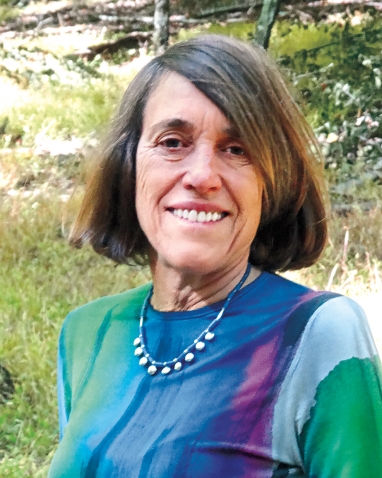In the late 1990s, a cluster of weather-beaten wooden buildings stood quietly in the middle of a mesa in Los Alamos, N.M., framed by tall ponderosa pines. The buildings were abandoned in the mid-1950s, visited only by occasional herds of deer. No one seemed to realize that they were the V Site buildings—where the first atomic bomb once hung from a metal hook, suspended above the heads of those who built it.
In 1997, due to reports of radioactive waste, the V Site was moved to New Mexico’s “demolition and destruction” list. Cindy Kelly ’68 was working as a senior executive for the Department of Energy (DOE) when that list landed on her desk. She’d been reading extensively about the Manhattan Project for years, and paused when she saw the V Site listing. Many of the other properties had already been destroyed. Were any of the original properties going to be saved, she wondered.
“Designing the world’s first atomic bomb was the most ambitious scientific and engineering undertaking in the 20th century,” says Cindy, who studied history at Wellesley and earned her M.A. in teaching at Yale. She worked with the Advisory Council on Historic Preservation to get the buildings removed from the demolition list. But that was only the first step.
Between plays at her sons’ Little League games on the weekends, she continued her research, consumed by figuring out how to restore and preserve the V Site. The next year, then-First Lady Hillary Rodham Clinton ’69 worked with Congress to set aside $30 million to preserve endangered and significant federal properties. The DOE won two grants.
Those grants, however, required raising matching funds, which federal government employees are barred from soliciting. “We found ourselves in a catch-22,” Cindy says. But after 25 years with the government (and winning a Distinguished Career Service Award), she was ready for a new challenge. Her husband, a lawyer, helped her form her own 501(c)(3), and she left the DOE. The Atomic Heritage Foundation was born in early 2002.
Raising over $1 million from scratch was next on the list. “You never know what’s going to work,” Cindy says, laughing. “At one point, I just went up to the Hill, knocked on the door of a clerk for the House Appropriations Committee, and introduced myself and the project.” He asked her how much she needed, and she told him where to insert her request for $25 million on the bill. The committee moved the decimal point to the left a few places, but after many similar bold moves the next two years, Cindy was in business.
Over a decade later, the foundation (which Cindy sees as “one big history project”) boasts a wealth of educational materials, over 200 oral histories, and remarkable gains in legislation, the most significant of which came in December 2014, when Congress voted to establish the Manhattan Project National Historic Park. 2015 marks the 70th anniversary of the atomic bombings of Japan and the end of World War II, and Cindy cherishes the fact that future researchers will be able to make up their own minds about the project. “I also hope people will be inspired by the creativity such a massive scientific undertaking requires,” she says, “and that they will look at this innovation and ask, ‘Can we have another Manhattan Project for curing cancer or solving global warming?’”





We ask that those who engage in Wellesley magazine's online community act with honesty, integrity, and respect. (Remember the honor code, alums?) We reserve the right to remove comments by impersonators or comments that are not civil and relevant to the subject at hand. By posting here, you are permitting Wellesley magazine to edit and republish your comment in all media. Please remember that all posts are public.